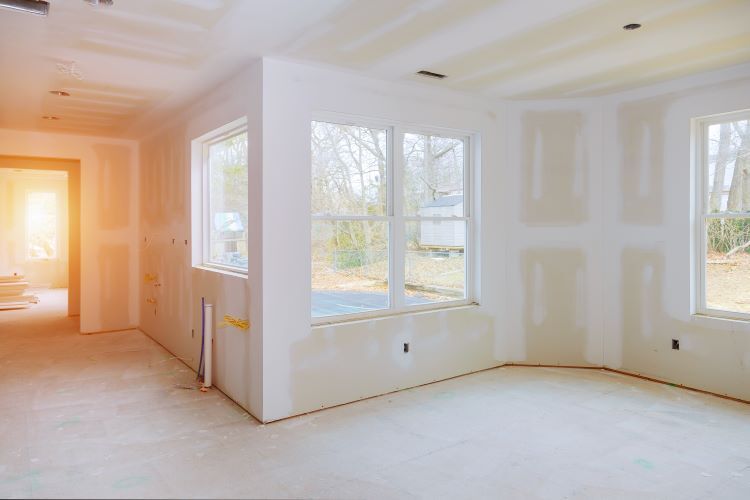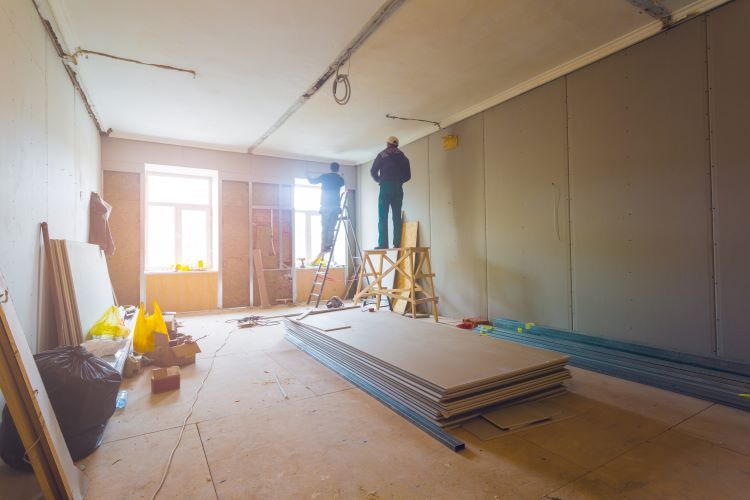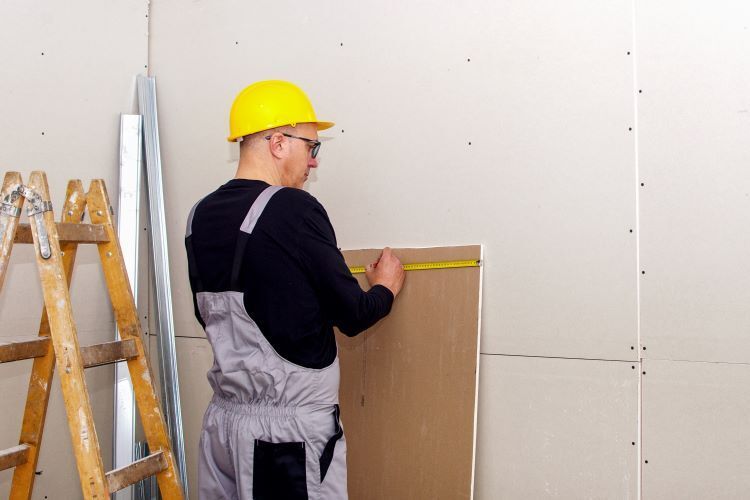Keeping Your Drywall Mold-Free: Tips for Prevention

Mold growth in drywall is not just an aesthetic issue—it can pose significant health risks and damage the integrity of your walls. If left untreated, mold can spread quickly, affecting the air quality in your home and causing costly repairs. At Saskatoon Drywallers, we understand the importance of keeping your home mold-free, especially in high-moisture areas like bathrooms and basements.
In this blog, we'll discuss how to prevent mold from forming on your drywall and the steps you can take to keep your home safe and clean.
Why Does Mold Grow on Drywall?
Drywall is particularly susceptible to mold because it's a porous material. When drywall is exposed to moisture, either from a plumbing leak, high humidity, or water damage, it creates the perfect environment for mold spores to thrive. Mold can grow quickly, often going unnoticed until it becomes a serious problem.
Common sources of moisture that can lead to mold on drywall include:
- Leaking pipes
- Flooding or water damage
- Poor ventilation in high-humidity areas like bathrooms and kitchens
- Condensation buildup in basements or poorly insulated walls
Once mold takes hold, it can spread rapidly, affecting large areas of drywall and leading to the need for removal and replacement. That’s why prevention is key.
Tips to Prevent Mold Growth on Drywall
Preventing mold starts with managing moisture in your home. Here are some effective ways to protect your drywall from mold growth:
1. Control Humidity Levels
High humidity is one of the leading causes of mold growth in homes. The ideal indoor humidity level should be between 30% and 50%. If your home’s humidity exceeds these levels, it can create the damp environment mold thrives in.
To control humidity:
- Use a dehumidifier, especially in basements or during the summer months when humidity is higher.
- Ensure proper ventilation in high-moisture areas, such as bathrooms and kitchens, by using exhaust fans or opening windows.
- Regularly check areas prone to condensation, like windowsills and basements, for signs of moisture buildup.
2. Address Water Leaks Immediately
Leaking pipes, roof leaks, and even small drips from fixtures can lead to major mold issues if not addressed quickly. Inspect your plumbing regularly and fix any leaks or drips promptly.
Additionally, be mindful of leaks from roofs, windows, and doors. Even a minor leak can cause significant water damage if left unchecked, leading to mold growth behind the drywall.
3. Use Mold-Resistant Drywall and Paint
For areas that are more prone to moisture exposure, such as bathrooms, basements, and kitchens, consider installing mold-resistant drywall. This type of drywall is made with materials that are less likely to absorb water, reducing the risk of mold growth.
In addition to mold-resistant drywall, using mold-inhibiting paint can further protect your walls from moisture. These paints contain antimicrobial agents that prevent mold from taking hold on the painted surface.
4. Ensure Proper Insulation
Poor insulation can lead to condensation buildup inside your walls, especially in colder climates like Saskatoon’s. When warm air from inside your home meets the cold surface of your exterior walls, it can cause condensation to form, providing moisture for mold to grow.
Make sure your home is properly insulated to prevent this. Insulating your walls, especially in basements, helps keep moisture levels in check and reduces the chances of mold forming behind the drywall.
5. Maintain Proper Ventilation
Ventilation plays a critical role in preventing moisture buildup. In areas like bathrooms, kitchens, and laundry rooms, proper ventilation is crucial to remove excess humidity. Ensure that your home has:
- Exhaust fans in bathrooms and kitchens that vent to the outside (not just into the attic or another room).
- Windows or ventilation systems in basements and crawl spaces to circulate air and reduce dampness.
6. Install Vapor Barriers
In particularly moisture-prone areas like basements, installing a vapor barrier behind the drywall can help block moisture from seeping into the drywall from the outside. Vapor barriers are typically sheets of plastic or foil that prevent water from moving through the walls and reaching the drywall.
7. Dry Wet Areas Immediately
If your drywall gets wet due to a flood or other water damage, act quickly to dry the area. Mold can begin to grow within 24 to 48 hours of moisture exposure. Use fans, dehumidifiers, and open windows to dry the area as quickly as possible. In severe cases, you may need to remove and replace the affected drywall to prevent mold from spreading.
What to Do If You Find Mold on Your Drywall
If you discover mold on your drywall, it's important to act quickly to prevent it from spreading. Small mold patches (less than 10 square feet) can often be cleaned with a mixture of water and detergent. However, if the mold has spread or penetrated deep into the drywall, it may be necessary to remove and replace the affected sections.
For extensive mold problems, it's always best to consult with professionals like Saskatoon Drywallers to assess the damage and ensure proper removal and replacement of the drywall.
Conclusion
Keeping your drywall mold-free is essential to maintaining a healthy and comfortable home. By managing moisture, controlling humidity, and addressing leaks and water damage quickly, you can significantly reduce the risk of mold growth in your home.
At Saskatoon Drywallers, we specialize in mold-resistant drywall installation and drywall repair to help you keep your home safe and mold-free. Whether you need new drywall for a renovation or assistance with mold-damaged drywall, our experienced team is here to help.
Contact us today to learn more about our drywall services and how we can assist with your next project!
You might also like


